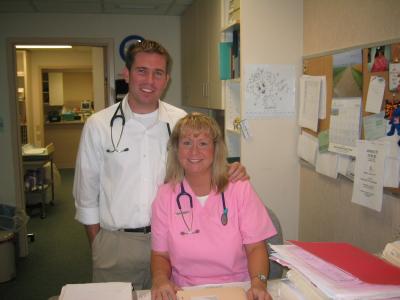April 8, 2004
School of Medicine tops U.S. News primary-care ranking
For the 11th consecutive year, the UW School of Medicine has been ranked as the nation’s top primary-care medical school in U.S.News & World Report’s annual survey of graduate and professional schools. In the annual rankings, the UW School of Medicine also continues to be regarded as the best in the United States for teaching medical students about rural medicine and family medicine.
The UW recently instituted a college system that provides four years of continuous, close mentorship for medical students. The UW medical school’s clinical training programs take place in multiple towns and cities in western Washington, as well as at sites across eastern Washington, Wyoming, Alaska, Montana, and Idaho (the WWAMI region). Physicians practicing in local communities volunteer to provide much of the training for UW medical students.
“The dedicated people of UW Medicine work very hard, so it is gratifying that U.S.News & World Report is beginning a second decade of emphasizing our national leadership role in physician training, patient care and research,” said Dr. Paul G. Ramsey, vice president for medical affairs and dean of the School of Medicine. “The new, innovative college system helps students concentrate on patient-centered care. We believe the college system is a national model for connecting what is enduring in medical education with the changes needed to address the next era in medical care.”
All UW medical students are assigned to one of five colleges named after natural wonders in Washington, Wyoming, Alaska, Montana, and Idaho; respectively, Rainier, Wind River, Denali, Big Sky, and Snake River. One example of the personal education delivered through the college system is that each college faculty member mentors six students from each class for the duration of their medical school experience. This year, the college faculty members have been developing specific benchmarks for use in teaching students and in measuring individual progress.
Along with rating medical schools generally, the survey measured reputations in teaching specific medical disciplines. The UW School of Medicine ranked No. 1 in family medicine and rural medicine, No. 4 in teaching about AIDS, and No. 5 in internal medicine. The school ranked No. 7 in geriatrics, No. 9 for pediatrics and tied for No. 10 in women’s health. The occupational therapist program in the Department of Rehabilitation Medicine ranked No. 12.
The UW’s graduate program in bioengineering, jointly administered by the College of Engineering and the School of Medicine, ranked No. 4 in the nation.
In the U.S. News’ analysis of National Institutes of Health (NIH) federal funding, the UW School of Medicine ranked first in the nation among public medical schools and second overall for receipt of federal funding. The UW School of Medicine received $488.5 million in NIH funding during 2003. The only medical school to receive more funding was Harvard, a private institution.
U.S. News compared the nation’s medical schools on several factors, including student selectivity, percentage of graduates entering primary care, faculty/student ratios, National Institutes of Health (NIH) research grants, and reputation. Reputation was based on a peer assessment questionnaire sent to the country’s medical school deans, senior faculty members, and residency program directors. Medical school deans and senior faculty members from across the country were also surveyed on which medical schools had the best training programs in specific fields, such as family medicine.
The UW School of Medicine is part of UW Medicine, which also includes UW Medical Center, Harborview Medical Center, UW Physicians, UW Medicine Neighborhood Clinics, and shares in the governance of the Seattle Cancer Care Alliance and the Children’s University Medical Group. UW Medicine has major academic and service affiliations with Children’s Hospital and Regional Medical Center, the Fred Hutchinson Cancer Research Center, and the Veteran’s Affairs medical centers in Seattle and Boise.
The School of Medicine’s 1,600 regular faculty include four Nobel Laureates, 26 members of the National Academy of Sciences, and 25 members of the Institute of Medicine. For more information about UW Medicine, visit the just-published dean’s report online at http://depts.washington.edu/drrpt/index.html
The rankings will appear on the magazine’s Web site at http://www.usnews.com



